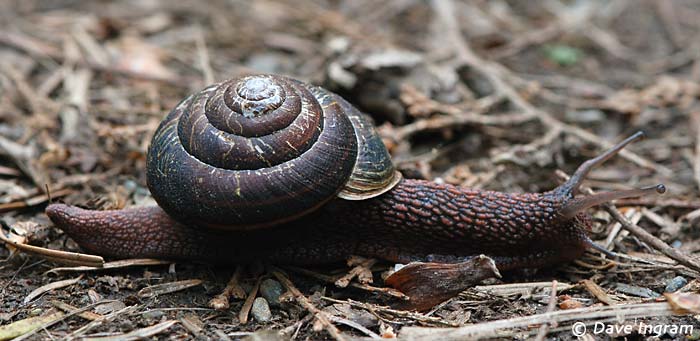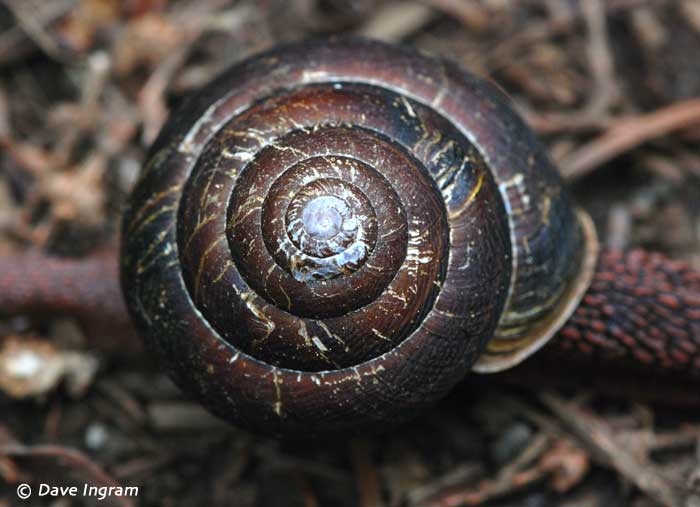Over the last couple of weeks I’ve noticed Pacific Sideband (Monadenia fidelis) snails crossing the trails that I’ve been walking at Miracle Beach Provincial Park and at Oyster River Nature Park on Vancouver Island, British Columbia. This large native British Columbian snail is comparable in size (a little larger) to the Grovesnails (Cepaea nemoralis), that I saw along the Courtenay Riverwalk in late April. However, the snail itself is more subtle in its colouration. The shell is brown with dark or light spirals and the body of the animal is a rosy brown colour.

Range of the Pacific Sideband
Pacific Sidebands live in mixed deciduous and coniferous forests of the coastal lowlands of the Georgia Basin in British Columbia. Efauna BC listes the global range of the species as “Sitka, Alaska (Dall 1905); British Columbia to northwestern California (Roth & Sadeghian 2003, 2006). La Rocque (1953) listed the species from the Yukon, but the presence of this species there seems unlikely. The Alaska record needs verification.”
The Pacific Sideband is blue-listed in British Columbia by the BC Conservation Data Centre. While its overall range is large (generally west of the Cascades and Coast Mountain ranges) it is vulnerable to habitat loss and fragmentation. Development, forestry and agricultural practices in the Lower Mainland and coastal areas of British Columbia are major threats to this native snail.
I spent some time at ground level, patiently waiting for a good moment to photograph the snails before moving them to the side of the trail. Spring and early summer seem to be good times to see these beautiful snails and I always enjoy seeing them!
Read More
For more information about Pacific Sideband snails consider:

